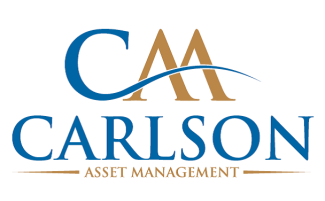Summer Market Commentary
"Art is the beautiful way of doing things. Science is the effective way of doing things. Business is the economic way of doing things."- Elbert Hubbard
The first half of 2018 is in the rear view mirror and I hope everyone is having a great summer so far. The 2nd quarter saw the S&P 500 turn positive with a gain of 2.93% after a 1st quarter loss of -1.22%. It seems equity markets as a whole are still grappling with issues that have lingered since the correction began in February, including trade disputes, Chinese deleveraging, and global political uncertainties. While most markets have held up relatively well, China’s Shanghai Index slipped into bear market territory in June and is on pace for its worst year since 2011. Despite these troubles, the United States, which is the world’s largest economy, shows no signs of buckling. Sturdy US economic growth should support global growth and equity prices during this consolidation period. With earnings season in full swing we continue to see dramatic improvement in corporate America’s earnings which we believe will power the US market higher by year end due in no small part to the effects of tax cuts and deregulation. However, returns could be more volatile and not as robust as the double digit returns we experienced in 2016 and 2017.
My experience has been that many people tend to get way too caught up in the headlines and thus have plenty of reasons not to invest in the stock market, and why not? The political discourse is ugly, trade disputes, interest-rate hikes, Russia, North Korea, etc. The fact is, there is no shortage of fodder to scare a person out of the markets. What if you had let the US credit downgrade of 2011 chase you out of the markets? Or election uncertainty push you out of the market in 2016? You would have missed out on a lot of gains. So today I continue to maintain that selling because of the headlines is still a bad idea. At Carlson Asset Management we prefer to ignore the headlines and look under the hood and check the vital signs of the market using Relative Strength. Using our tools of technical analysis we search to identify the strongest asset classes and market sectors. Below is our “Dynamic Asset Level Investing” chart or “DALI” as we call it which serves as our market “guidelines”
US equities continue to dominate in first place with international equities and commodities following suit. US equities have been firmly entrenched in the leadership position for 7 years now and do not show any sign of giving up the lead spot. Earlier this year, international equities almost overtook US equities for the number #1 spot. However, they stalled after all of the trade disputes and tariffs were put in place, I guess you could call it the Trump effect. Another observation from DALI is that we have seen Commodities move up to the #3 position, no doubt due to the strong economy which is pushing up the price of energy and other raw materials. Within the strong commodity sector, precious metals continue to languish and have been in a bear market since 2011. Despite the poor performance in precious metals, we have noticed that many mining stock’s prices have broadly stabilized and are forming a base, and this could lead to potential buy signals in the future.
Fixed Income is down to the #4 position, no doubt due to higher rates in the first quarter and talk of further rate hikes. While fixed income is necessary for diversification in some portfolios, the returns remain uninspiring, and the search for yield has resulted in equities being the favored asset classes. Within equities, technology, financials, energy, and industrials hold the top 4 spots. This does not mean that there are no strong names in the lower sectors, as we often find technically strong individual stocks in most of the asset classes. Even the last place real estate sector has names that we like and hold in client portfolios. We like to use DALI as a blueprint for constructing models of ETF’s and Mutual Funds as we strive to seek outperformance or “Alpha” as it is known in the industry. It also gives us a direction to seek individually strong company names.
Finally, I wanted to briefly mention three of our widely held stocks that have certainly been delivering “Alpha” this year:
Microsoft (MSFT): They recently delivered another strong earnings report and continue to dominate cloud services. Microsoft has 5 out of 5 positive technical attributes and pays a 1.6% dividend at the current price. Year to date MSFT is up 25% at this writing.
Kohlberg Kravis Roberts (KKR): A few weeks ago KKR converted from a limited partnership format to a C corporation. This conversion eliminates the onerous K-1 which until now has kept a large swath of investors out of its stock. KKR is a leader in private equity, has 3 out of 5 positive technical attributes and pays a 3% dividend at the current price. Year to date KKR is up 29% at this writing.
Boston Scientific (BSX): A leading provider of interventional cardiology products. BSX has been a low volatility name but has been demonstrating consistently strong growth in recent quarters. A few weeks ago rumors were circulating of a buyout and the Wall Street Journal reported that Stryker (SYK) may be preparing a bid for the company. This was later denied by Stryker but I have heard many analysts suggest a buyout by someone is possible. Year to date BSX is up 36% at this writing.
I wish you a happy summer and would love to hear about any of your travels and adventures. Come September after all the kids are back in school we will continue to our tradition of hosting seminars on how we manage money. If you have any interest in attending one, or someone who would, please give us a call and we will save you a spot. Lastly, please keep us posted of any changes in your financial situation and don’t hesitate to call for a review appointment. I’m looking forward to a strong finish for 2018!
Sincerely,
Bruce Carlson, CFP®
President
Carlson Asset Management
The opinions expressed in this commentary are those of the author and may not necessarily reflect those held by Kestra IS or Kestra AS. The material is for informational purposes only. It represents an assessment of the market environment at a specific point in time and is not intended to be a forecast of future events, or a guarantee of future results. It is not guaranteed by Kestra IS or Kestra AS for accuracy, does not purport to be complete and is not intended to be used as a primary basis for investment decisions. It should also not be construed as advice meeting the particular investment needs of any investor. Neither the information presented nor any opinion expressed constitutes a solicitation for the purchase or sale of any security.




